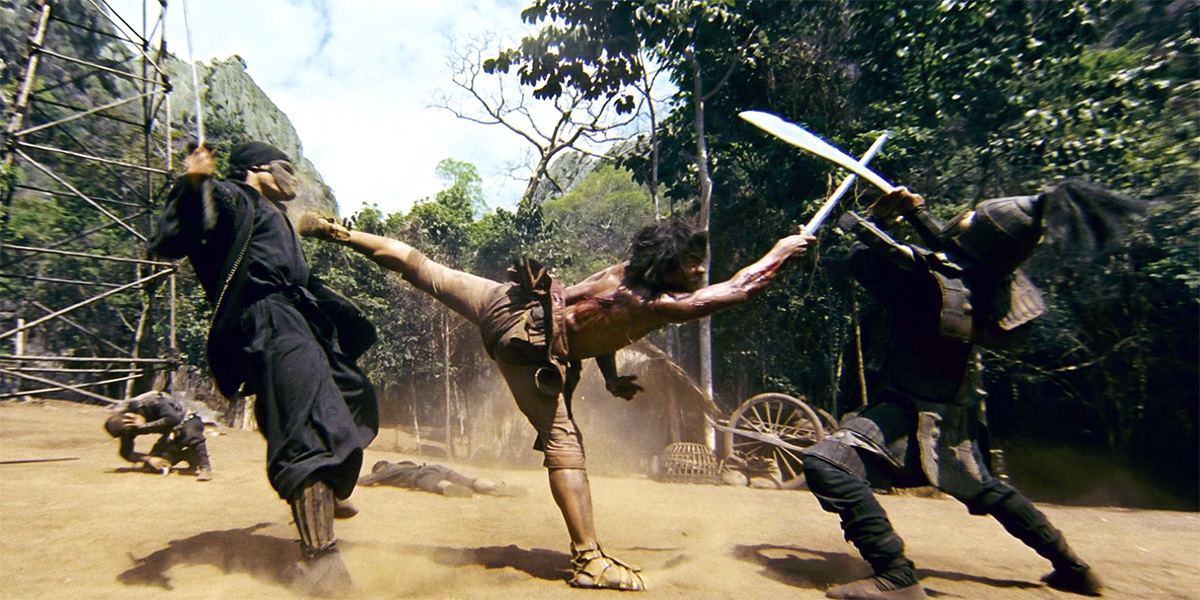Article: Ong-Bak: Muay Thai Warrior – The Rise of a New Martial Arts Legend
Released in 2003, Ong-Bak: Muay Thai Warrior is a landmark film in the world of martial arts cinema. Directed by Prachya Pinkaew and starring newcomer Tony Jaa, the Thai action film reignited global interest in traditional martial arts, particularly Muay Thai. Known for its raw, bone-crunching action and the physical brilliance of its lead actor, Ong-Bak became a cult classic almost overnight, establishing Tony Jaa as an international action star and a worthy successor to legends like Bruce Lee and Jackie Chan.
The story is deceptively simple but effective. In a quiet rural village in Thailand, a sacred Buddha statue called “Ong-Bak” is stolen by a criminal syndicate. The villagers, devastated by the loss of their spiritual protector, turn to Ting (Tony Jaa), a humble young man trained in Muay Thai, to retrieve the statue and restore their honor. Ting travels to Bangkok, where he becomes entangled in the criminal underworld, facing off against ruthless gangsters, corrupt fighters, and a violent drug lord. As Ting fights his way through the city’s dark underbelly, he uses his traditional martial arts skills not only to defeat his enemies but also to uphold the values of respect, spirituality, and community.

What truly sets Ong-Bak apart is its groundbreaking action. Tony Jaa performed all of his own stunts without the use of CGI, wires, or stunt doubles—a rarity in modern filmmaking. His physicality is breathtaking, blending power, speed, and acrobatic precision in a way that feels both authentic and thrilling. The fight scenes, choreographed by Jaa and his mentor Panna Rittikrai, are intense, fast-paced, and brutal. Whether leaping through narrow spaces, using elbows and knees in rapid succession, or taking down multiple opponents in a crowded alleyway, Jaa brings a level of realism and artistry that stunned audiences around the world.
Beyond the action, Ong-Bak also functions as a cultural statement. The film proudly showcases Thai heritage, particularly the spiritual significance of Buddhism and the importance of Muay Thai as a national symbol. Ting is not just a fighter—he is a guardian of tradition, embodying the values of humility, discipline, and inner strength. The contrast between the quiet serenity of his village and the chaos of urban Bangkok adds depth to the story, highlighting the tension between modern corruption and ancient values.

While the plot of Ong-Bak may follow familiar action movie tropes, its execution and authenticity elevate it far above genre expectations. The film’s gritty, handheld cinematography and minimal use of special effects give it a documentary-like feel, enhancing the sense of realism. It’s not just a movie about fighting—it’s a celebration of cultural pride and human physical potential.
In conclusion, Ong-Bak: Muay Thai Warrior is more than just a martial arts film; it is a cinematic explosion of talent, tradition, and adrenaline. Tony Jaa’s performance redefined what audiences expected from action cinema, and the film’s influence can still be felt in the genre today. For fans of martial arts, Ong-Bak is an essential watch and a reminder of what happens when passion, discipline, and cultural respect meet on screen.


